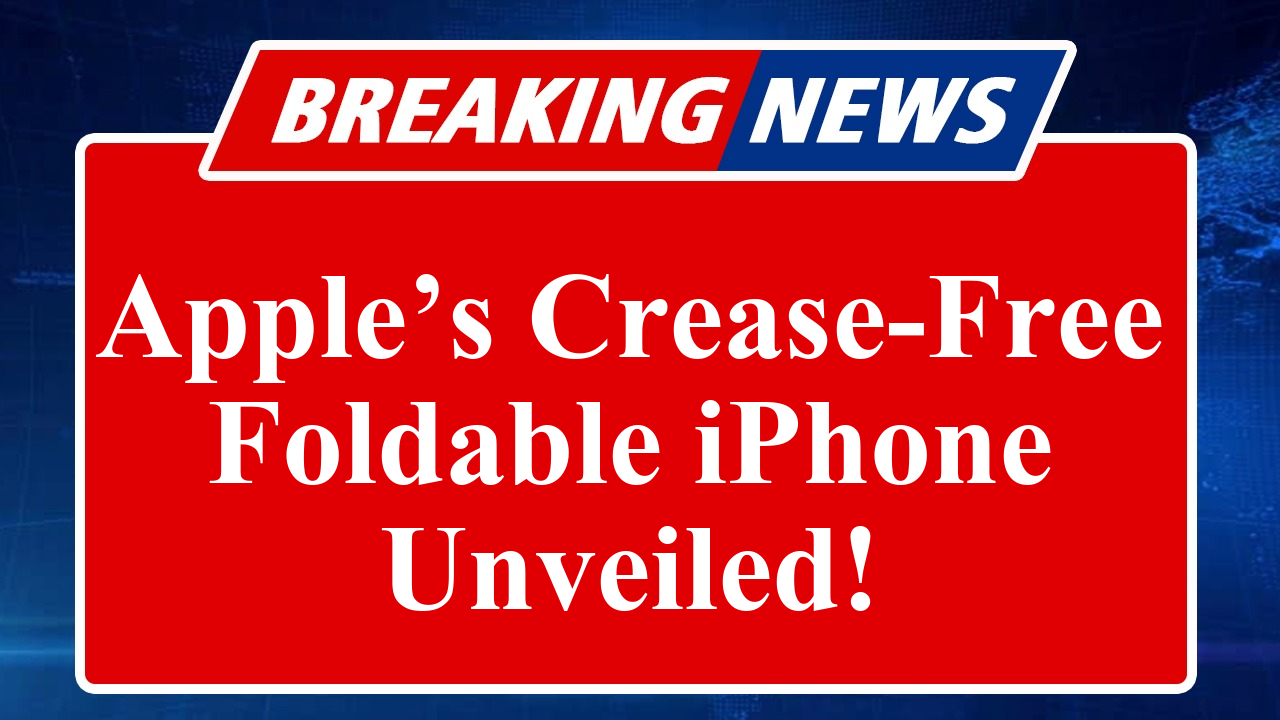“Apple is advancing its foldable iPhone, targeting a 2026 launch with a crease-free 7.8-inch OLED display and a durable titanium hinge. The device, now in the prototyping phase, promises dual 48MP cameras and a premium design, potentially priced between $2,000-$2,500. Development prioritizes minimizing the screen crease, a common issue in foldable smartphones.”
Apple’s Foldable iPhone Nears Reality with Innovative Crease-Free Tech
Apple has entered the foldable smartphone race, with its much-anticipated foldable iPhone, potentially named the iPhone Ultra, moving into the Prototype 1 (P1) phase in June 2025, according to supply chain sources cited by DigiTimes. The device is on track for a possible launch in the second half of 2026, aligning with Apple’s rigorous multi-year development process, which includes P1, P2, P3, Engineering Verification Test (EVT), Design Verification Test (DVT), and Mass Production (MP) stages.
A key highlight of the foldable iPhone is its 7.8-inch OLED display, developed in collaboration with Samsung Display, aimed at delivering a crease-free experience—a significant improvement over existing foldable devices like Samsung’s Galaxy Z Fold series, which often face criticism for visible creases. Apple is reportedly using an “amorphous metal glass composite” material and a titanium alloy hinge to enhance durability while minimizing the crease. The device is expected to feature a 5.5-inch cover display for compact use when folded and a 7.8-inch main display for a tablet-like experience when unfolded.
The foldable iPhone is rumored to include a dual 48MP camera system, matching the iPhone 16 Pro’s capabilities, ensuring high-quality photography despite the space constraints of a foldable design. Unlike Apple’s traditional Face ID, the device may incorporate a side-mounted Touch ID sensor due to the foldable structure’s limitations. The phone’s chassis is expected to be crafted from titanium alloy, maintaining Apple’s signature thin profile—approximately 4.5mm when unfolded and 9-9.5mm when folded.
Apple’s focus on a crease-free display addresses a major pain point in the foldable market, where competitors like Samsung, Huawei, and Motorola have struggled to eliminate creases entirely. Industry insiders suggest Apple has undergone over a dozen design revisions in the past five years to perfect this technology. The company is also prioritizing power efficiency and battery life to balance the demands of the foldable form factor, with the latest Apple silicon chip expected to power the device.
While Apple has paused development on a foldable iPad due to high production costs and limited consumer demand for large-screen foldables, the foldable iPhone remains a priority. The device is expected to target high-end consumers, with a price tag ranging from $2,000 to $2,500 (approximately ₹1.73 lakh to ₹2.16 lakh), positioning it as a premium offering in Apple’s lineup. Foxconn is set to begin assembly in late 2025, with Samsung Display supplying 7 to 8 million foldable panels annually, though initial shipments in 2026 may be limited to 3 to 5 million units.
The foldable iPhone’s book-style design, similar to the Samsung Galaxy Z Fold, differentiates it from clamshell-style foldables like the Galaxy Z Flip. Rumors also suggest potential AI features tailored for multitasking and media, leveraging the larger display for enhanced productivity. As Apple refines its prototype through 2025, the foldable iPhone could redefine the smartphone market, setting a new standard for foldable technology.
Disclaimer: This article is based on reports and leaks from industry sources, including DigiTimes, MacRumors, and analyst Ming-Chi Kuo. Information is subject to change as Apple’s development progresses. Always verify with official announcements before making purchasing decisions.

